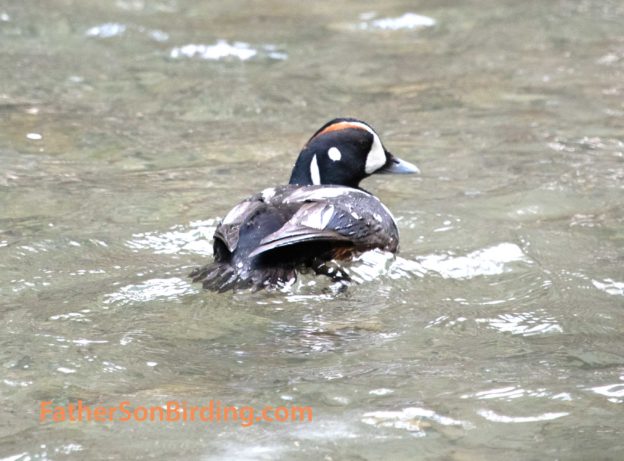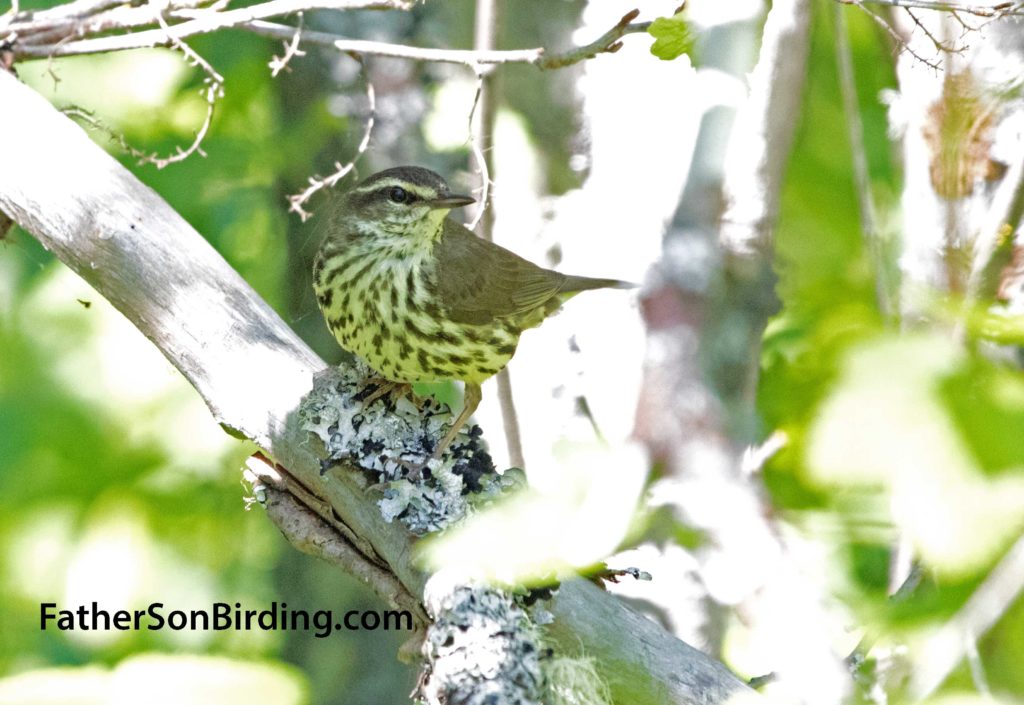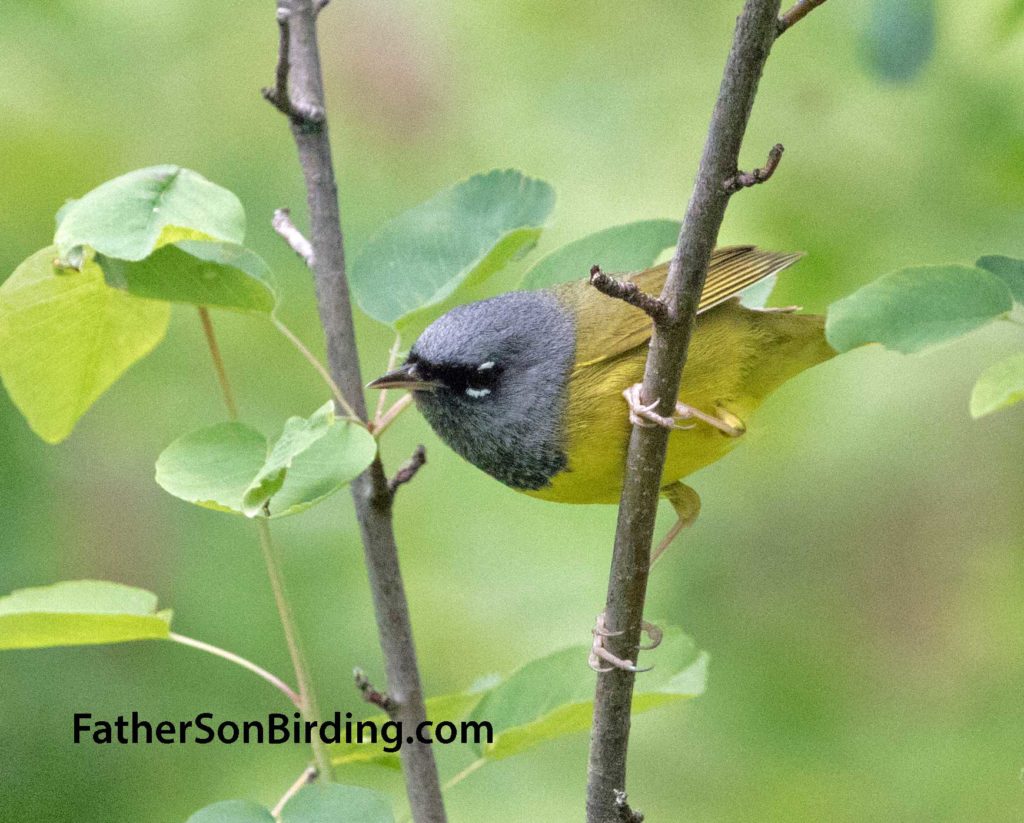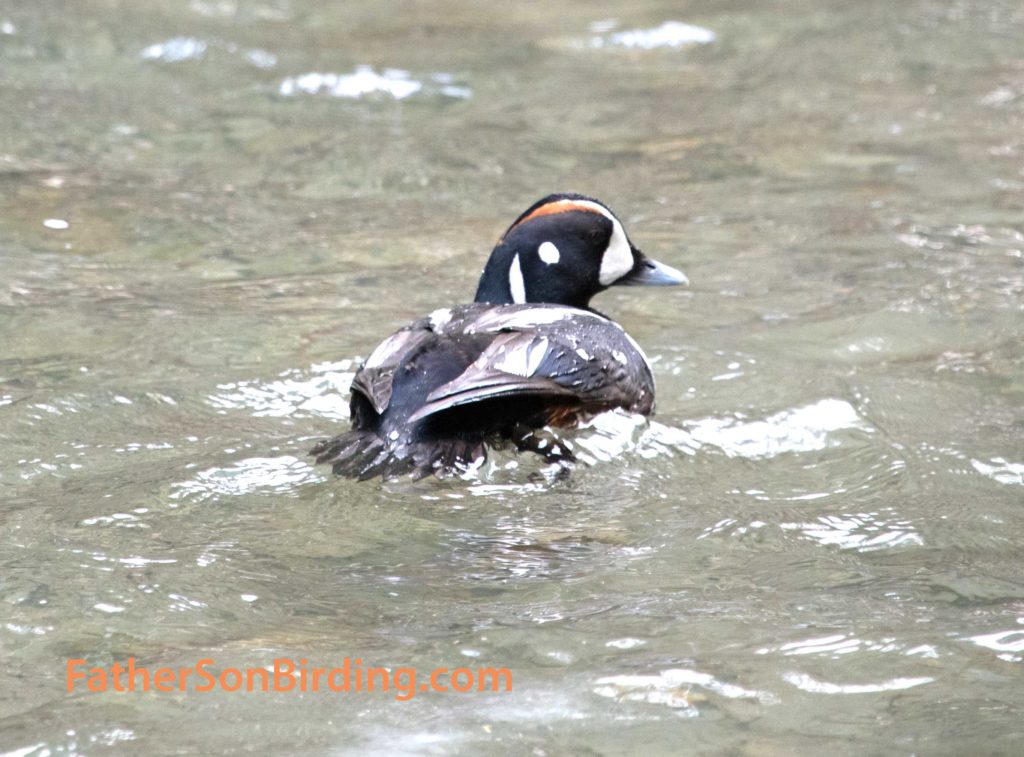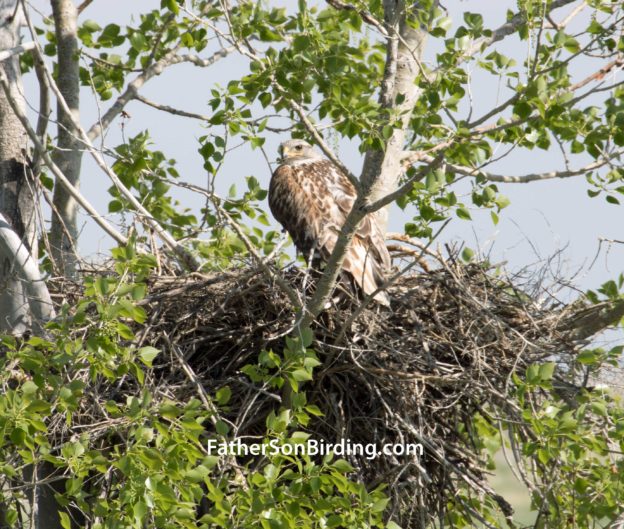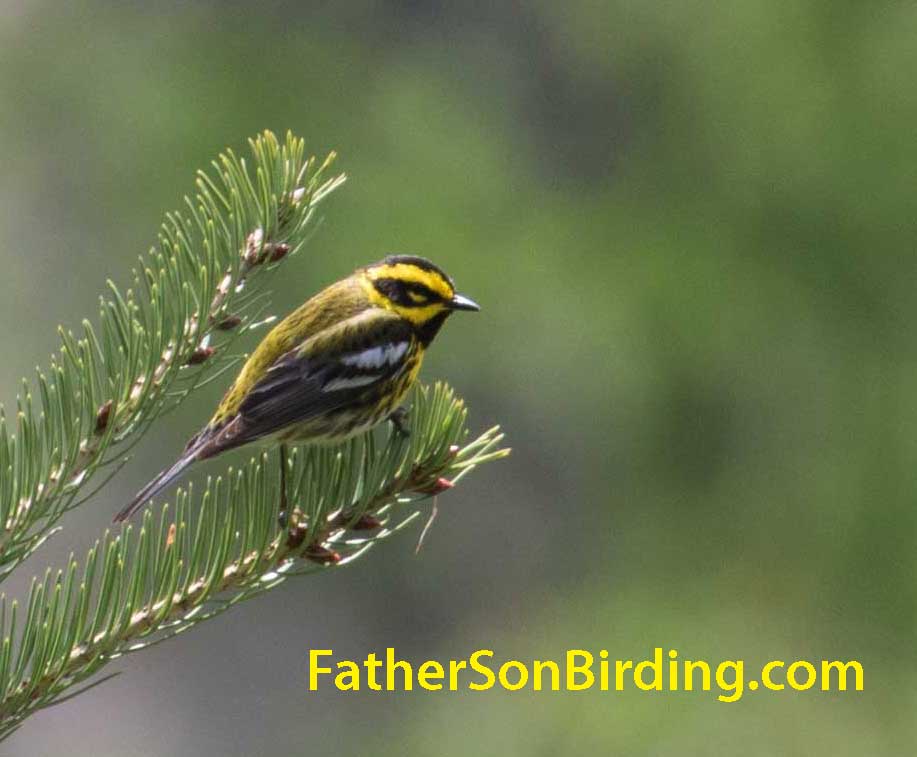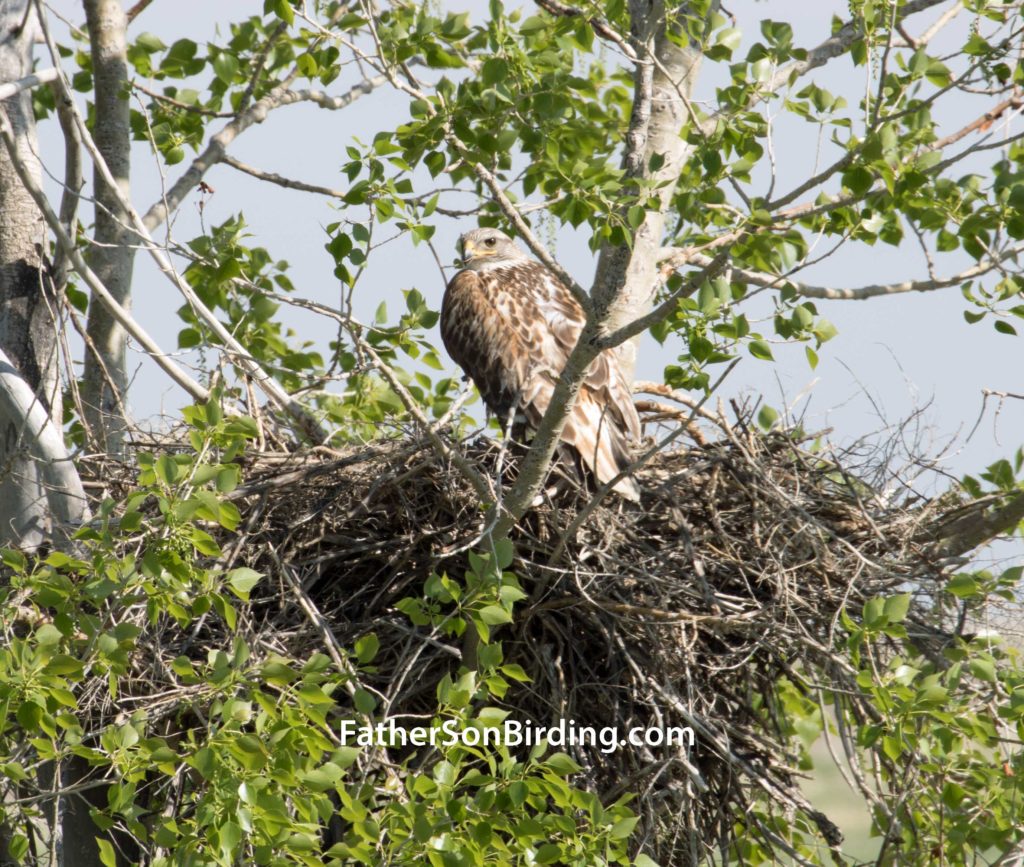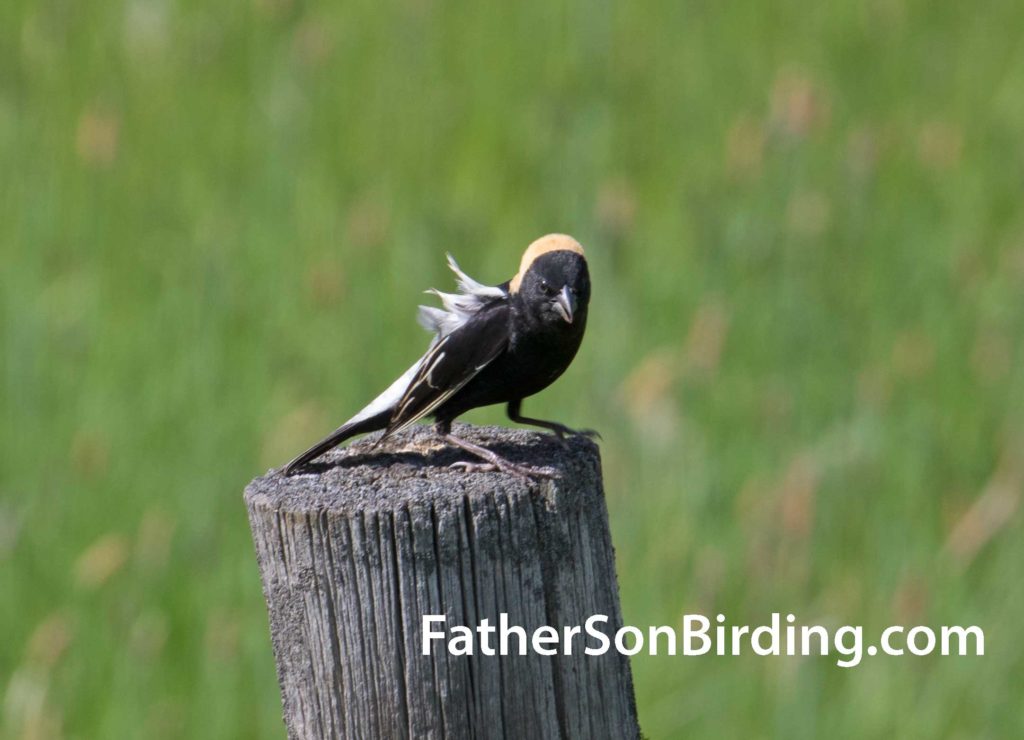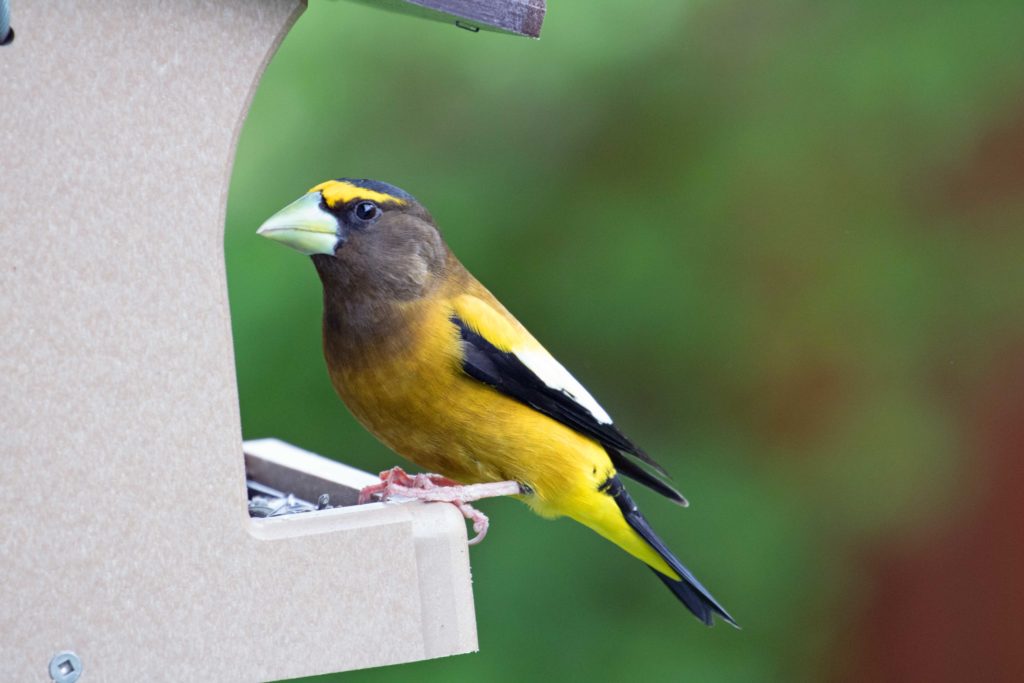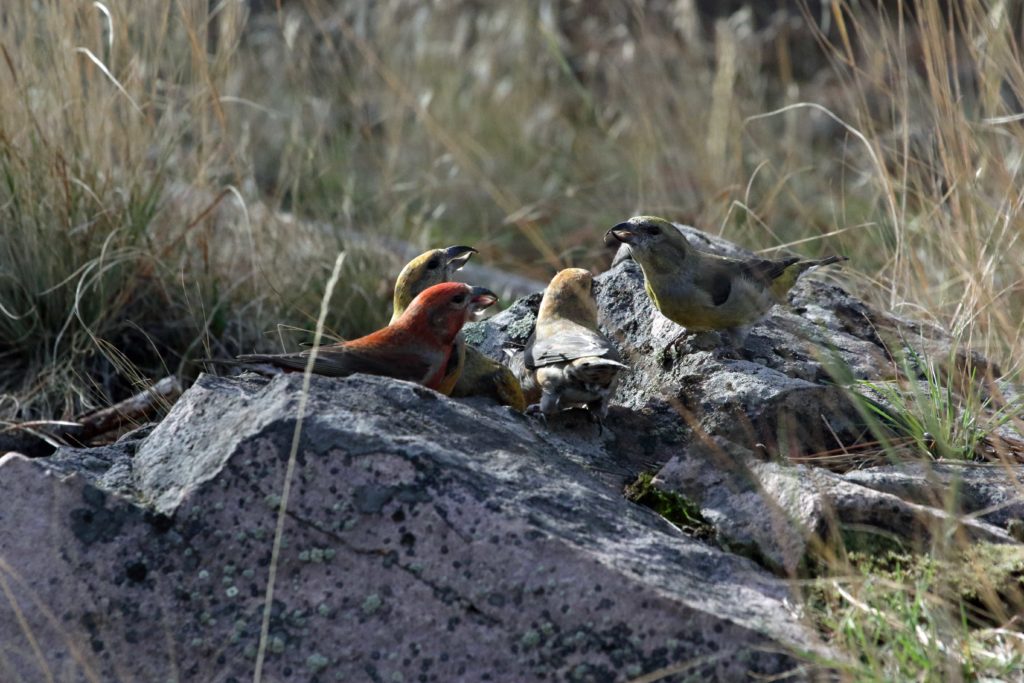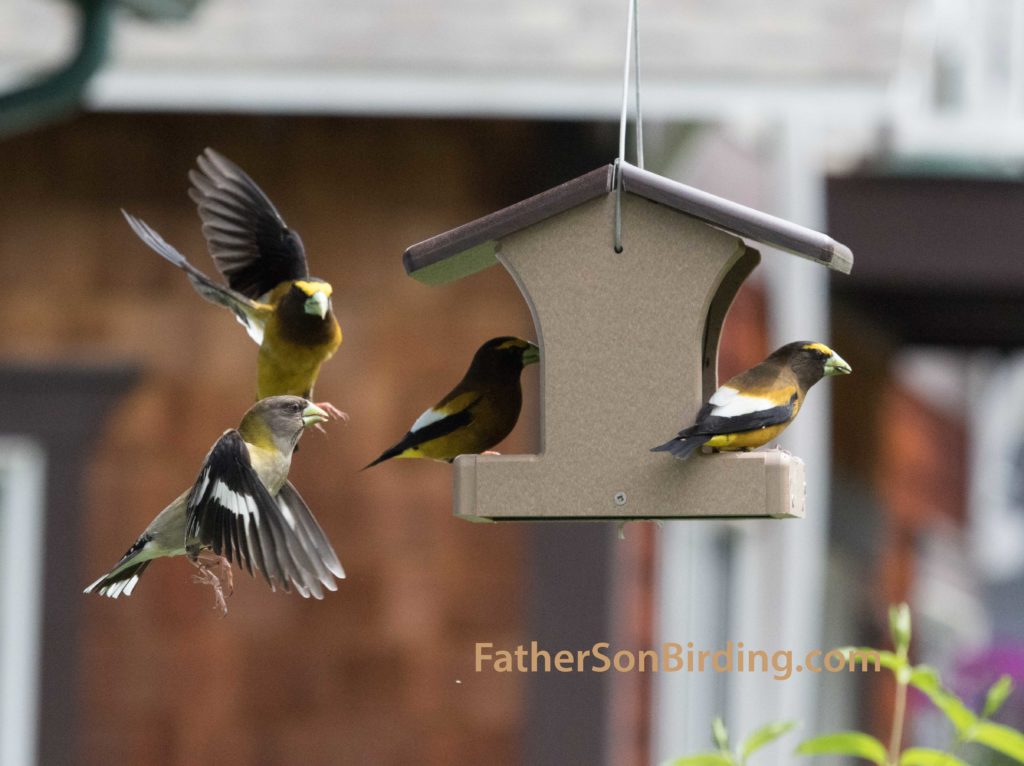To Subscribe to FatherSonBirding, please fill out your (brief) information in the appropriate box in the column to the right. Thanks!
Braden here.
At 6:30 on Sunday, June 17th, retired UM Professor Dick Hutto picked up my dad and me to go birding. In the passenger seat of Dick’s car was Dick’s former graduate student Hugh Powell, who was in Missoula to write an article for the Cornell Lab of Ornithology. Our mission was simple: see a Black-backed Woodpecker.
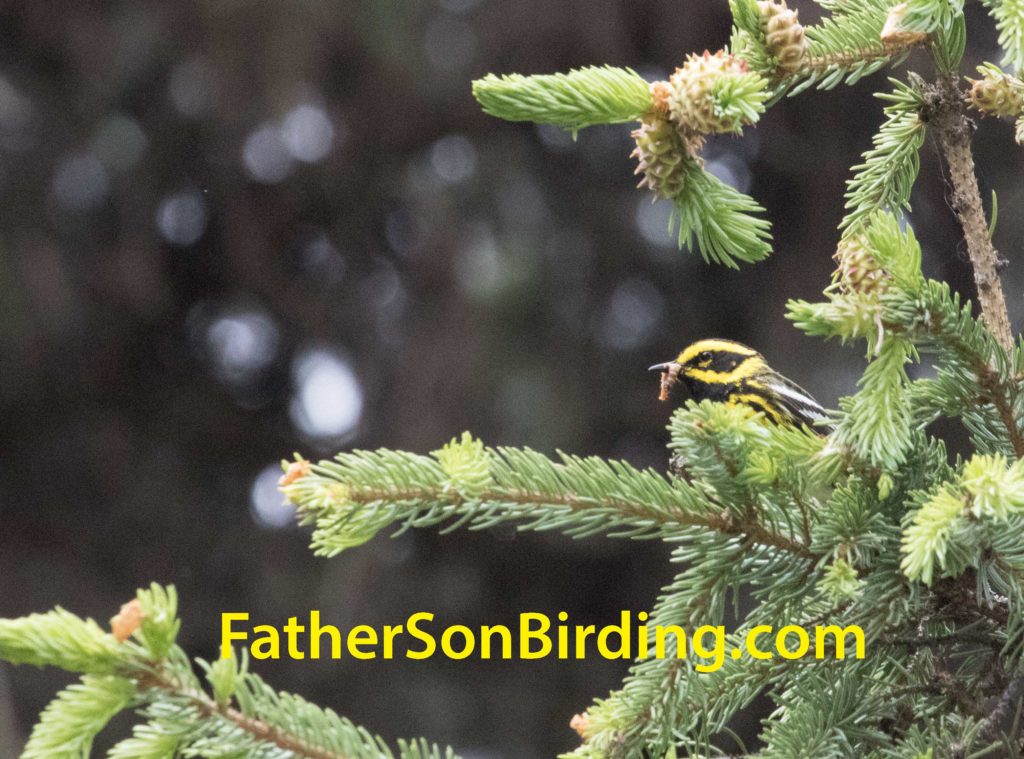
Townsend’s Warbler. (Photo by Sneed B. Collard III)
We were headed to an area known as the Rice Ridge Fire (after a quick coffee stop), to the northeast of Missoula. The first time we had heard about this trip was at Montana Audubon’s Wings Across the Big Sky Bird Festival. A birder from Helena told us that Dick (who had an abundance of bird knowledge, specifically about birds that liked fire) was leading a field trip up to the burn and mentioned we might want to come along. My dad, who knew Dick well, jumped at the chance and asked Dick if we could get a ride up with him. Well, here we were.
At Seeley Lake, a large tourist area as well as great birding stop, we met the rest of the group, all birders of different experience levels from Helena. Knowing that this area was good for American Redstarts and Northern Waterthrushes, my dad and I persuaded the group to look around Seeley before hitting the burn. We quickly saw and heard 15 species, including the uncommon Willow Flycatcher, identified by its characteristic call, Fitz-bew.
We slowly made our way up Rice Ridge Road, stopping regularly to look for our goal, the Black-backed. The burn area had not been logged, thankfully, and every time we stopped Dick emphasized that it should not be logged, either—why not just cut trees near town instead? Burn areas have some of the highest levels of biodiversity in the country! (For more information on this, check out my dad’s book, Fire Birds: Valuing Natural Wildfires and Burned Forests.)
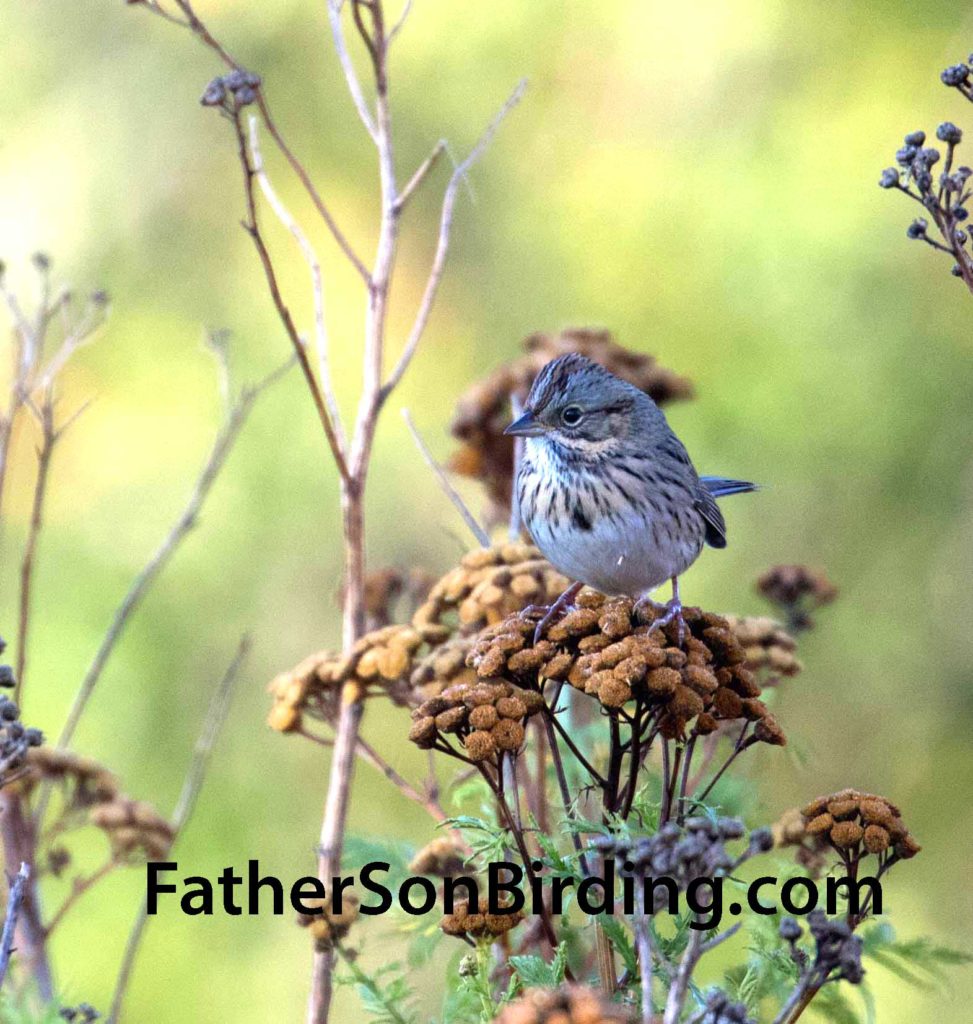
Lincoln’s Sparrows are known for nesting in higher altitude wet areas. (Photo by Braden Collard)
No Black-backeds showed, but the birds did not disappoint—MacGillavry’s Warblers and Lincoln’s Sparrows skulked in the low brush, Bluebirds danced across the black trunks, and woodpeckers of many species drummed and called. On that one stretch of road we observed four species—Northern Flicker, Hairy Woodpecker, Williamson’s Sapsucker, and (new for the year) at least three American Three-toed Woodpeckers, the Black-backed’s slightly less burn-dependent cousin.
In one spot, sort of a mix of burn and old-growth with a creek running through it, we were amazed with the number of species. A dipper, nesting under the bridge. Great looks at a Townsend’s Warbler. Large numbers of Western Tanagers and robins, both burn-preferring species. Sharon Dewart-Hansen, a Helena woman who was first in the state for the year, pointed out a new call for us—the Whip Three Beers of the Olive-sided Flycatcher.
Dick was slightly disappointed at the low number of woodpeckers, saying they would reach their peak two or three years from now, but everyone else was ecstatic. It had been a great trip, Black-backed or not.
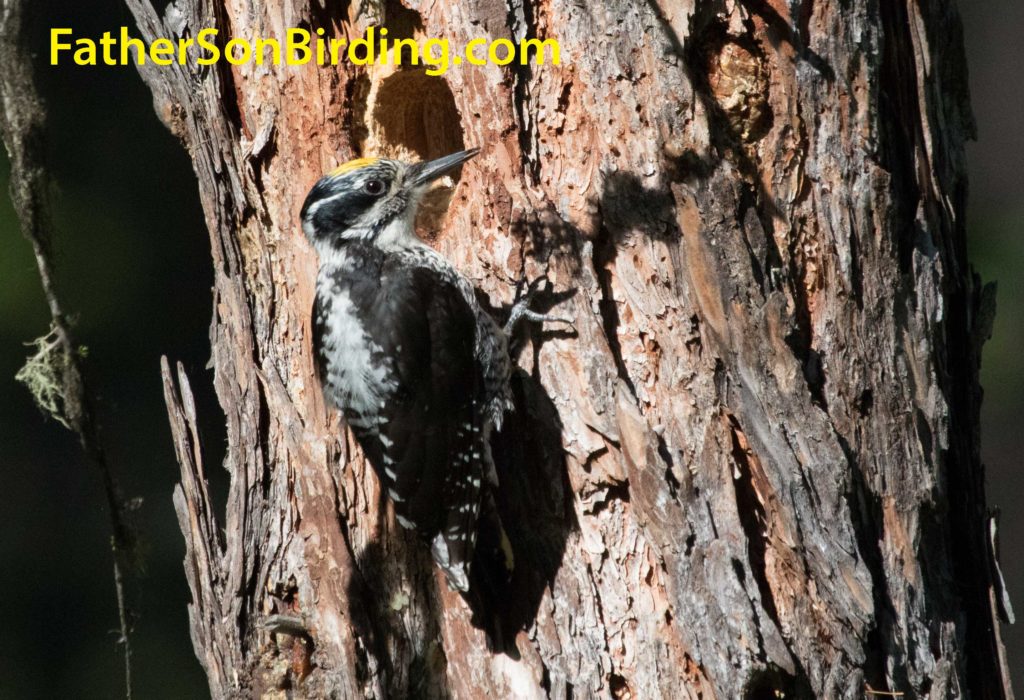
The number of American Three-toed Woodpeckers that are in burns is double that of those not in burns. (Photo by Sneed B. Collard III)

